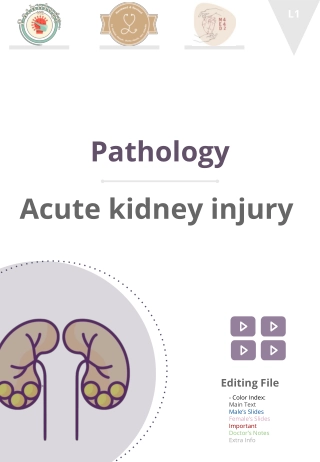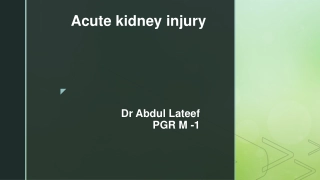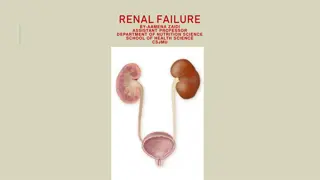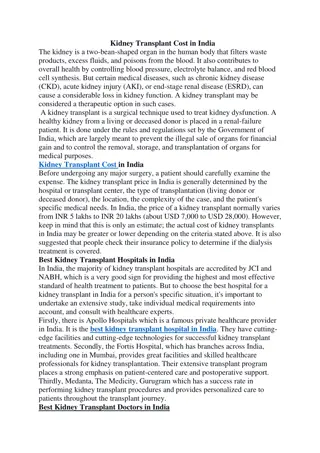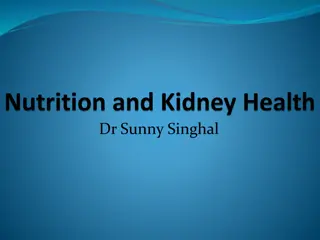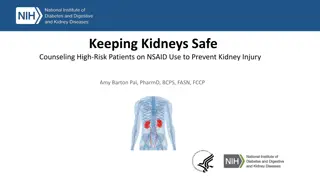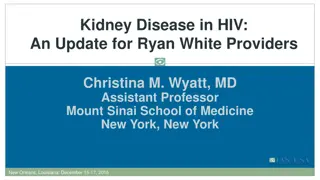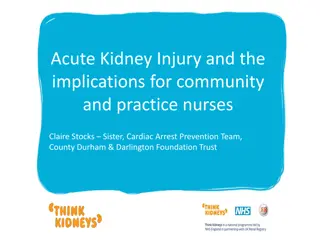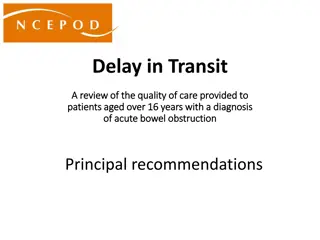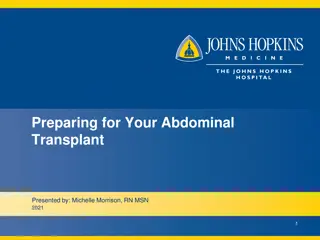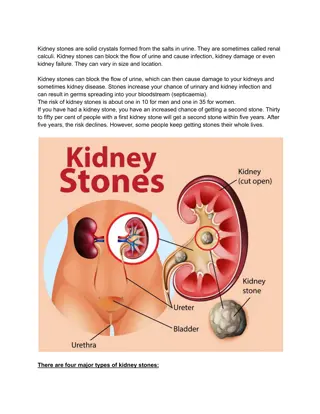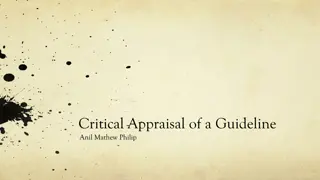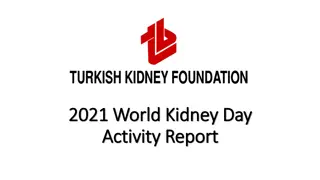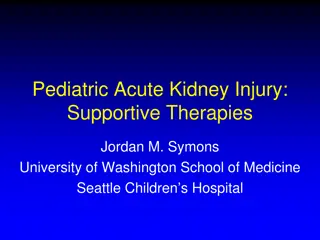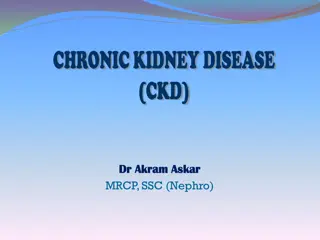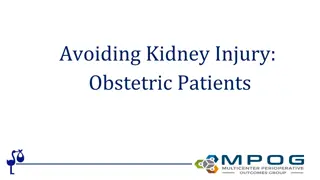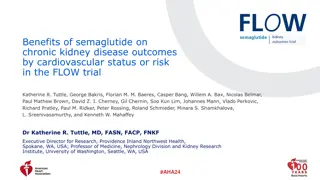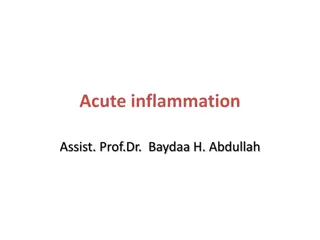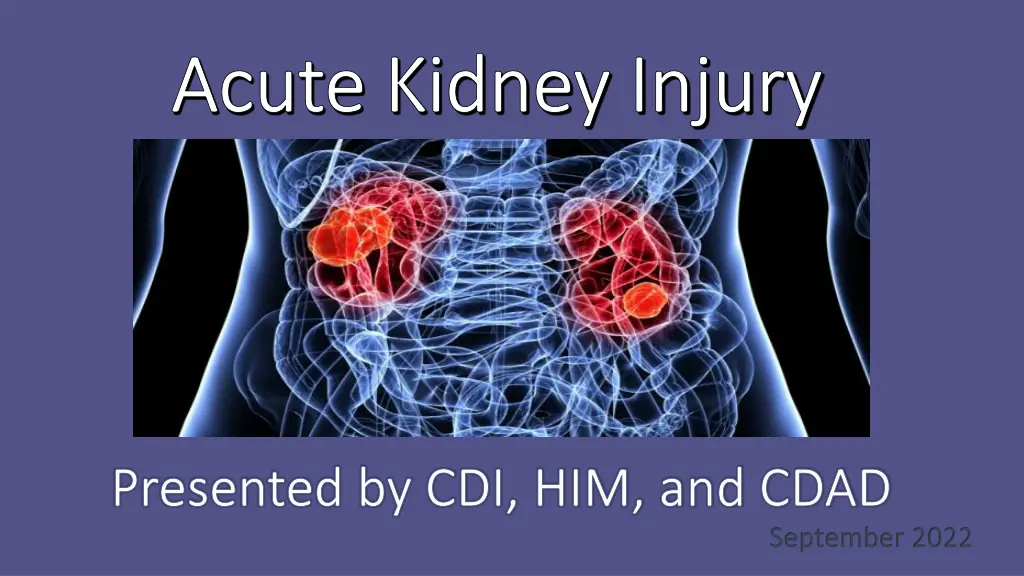
Understanding Acute Kidney Injury Denials and Appeals in Healthcare
Learn about the impact of denials related to Acute Kidney Injury diagnoses in hospitals, including the denial process, appeal strategies, and key clinical documentation requirements. Follow a case study where Catholic Health successfully appealed a denial based on relevant clinical indicators and guidelines.
Download Presentation

Please find below an Image/Link to download the presentation.
The content on the website is provided AS IS for your information and personal use only. It may not be sold, licensed, or shared on other websites without obtaining consent from the author. If you encounter any issues during the download, it is possible that the publisher has removed the file from their server.
You are allowed to download the files provided on this website for personal or commercial use, subject to the condition that they are used lawfully. All files are the property of their respective owners.
The content on the website is provided AS IS for your information and personal use only. It may not be sold, licensed, or shared on other websites without obtaining consent from the author.
E N D
Presentation Transcript
Acute Kidney Injury Acute Kidney Injury Presented by CDI, HIM, and CDAD Presented by CDI, HIM, and CDAD September 2022 September 2022
Recap Recap Acute kidney injury is one of Catholic Health s top denied diagnosis. A Denial is when the Insurance Company reviews the record and finds lack of clinical support, conflicting documentation, and/or lack of treatment for a diagnosis billed by the hospital organization; They then notify the Hospital Organization via mail that they are removing a diagnosis from the claim and explain their reasoning why. An Organization can appeal the denial letter by sending a letter back to the Insurance Carrier explaining their reasoning for maintaining the diagnosis on the claim. This letter includes actual clinical support from the medical record and cited references from CMS and/or World Health Organizations to add additional support to the diagnosis. If the Organization is unable to locate/provide the clinical support for the denied diagnosis from the documentation in the medical record, they will not appeal the denied diagnosis and it is removed from the claim. This leads to the Hospital Organization having to reimburse the Insurance Carrier, and it can potentially lower the patient s SOI/ROM and intended LOS CDI, HIM, and the Clinical Denials Team (CDAD) have teamed together, with the endorsement of Leadership, in order to create System Wide Education on Documentation requirements that will support the clinical validity of Acute Kidney Injury
Example of Denial Letter for Acute Kidney Injury Example of Denial Letter for Acute Kidney Injury
Patients Claim Patient s Claim Thus, the Insurance Carrier is asking for reimbursement of $17,701.77 to them citing the diagnosis Thus, the Insurance Carrier is asking for reimbursement of $17,701.77 to them citing the diagnosis o of Acute Kidney Injury was not supported during this patient s admission. f Acute Kidney Injury was not supported during this patient s admission.
Catholic Health Appealed! Catholic Health Appealed! Our Physician Advisor disagreed with the Insurance Carrier s Reviewer Physician Advisor cited According to the National Kidney Foundation there is an acute kidney injury if the increase in creatinine is greater or equal to 0.30 mg/dl. The patient s baseline creatinine was 1.01 and it went to 1.31 before coming down. This was a rise of 0.30 mg/dl. This was a rise of 0.30 mg/dl. Therefore, this case meets the definition of acute kidney injury set by the National Kidney Foundation . Per the clinical documentation in the medical record: Patient underwent catheter directed thrombolysis with EKOS and TPA followed by RLE Angiogram with balloon angioplasty and mechanical thrombectomy. Postoperatively, patient was hypotensive with SBP in the 70 s and home antihypertensives were held. Trended Creatinine s: 1.17 1.01 1.31 1.07 1/27 Medical Progress note: Acute Kidney Injury. Trend renal indices; Slight increase in creatinine since admission; NS at 40ml/hr started for hydration (Consistent documentation of condition and treatment) Clinical Denials Team Cited: KDIGO defines Increase in creatinine level to 1.5x baseline (historical or measured), which is known or presumed to have occurred within the prior 7 days; or Increase creatinine (measured prospectively) of 0.3 mg/dl from baseline within 48 hours; or Urine output < 0.5 ml/kg/hr for 6 hours These criteria apply to patients with and without CKD. KDIGO defines Acute kidney injury as any of the following:
Catholic Health Appeal Catholic Health Appeal Con t Con t Clinical Denials team also cited: The diagnosis of AKI depends on what the normal baseline for an individual patient is AKI depends on what the normal baseline for an individual patient is, not the reference range the test (often misunderstood as "normal range") on the lab report. Reference range is a population-based statistic. It does not indicate what is normal for an individual. The AKI creatinine criteria are applied to the baseline without regard to the reference range. reference range for EXAMPLES EXAMPLES: : Baseline = 0.4 mg/dl with increase to 0.8 mg/dl in 36 hrs meets both > 0.3 and 1.5x criteria (0.8 is 2x baseline of 0.4 = a substantial 50% loss of kidney function for this individual). Creatinine on admission = 1.0 with decrease to 0.5 (baseline) over two days meets 1.5x criterion (1.0 is 2x baseline of 0.5). Pinson MD, R., & Tang , C. (n.d.). Acute Kidney Injury (AKI). Retrieved from CDI Pocket Guide: https://www.pinsonandtang.com
Response to Catholic Healths Appeal Response to Catholic Health s Appeal We are in receipt of your reconsideration request of the Reimbursement Integrity Unit s determination to delete secondary diagnosis N17.9 Acute kidney failure, unspecified. Following a review of the documentation you submitted, along with a thorough re-review of the inpatient medical record, Highmark Blue Cross Blue Shield of Western New York's original determination is being reversed. This 61 year old with femoral popliteal bypass graft thrombosis, underwent thrombolysis. On admission creatinine level 1.17/1.01/1.31 and on discharge 1.07. Acute kidney injury was documented and treated. According to KDIGO guidelines there was an increase in serum creatinine level of >0.3mg/dl from baseline within 48 hours. Secondary diagnosis N17.9 was correctly coded and will be included in the DRG calculation and the claim will remain processed as APR-DRG 181-2. Thank you for your concern regarding this matter.
Acute Kidney Injury No appeal as documentation did not support the diagnosis No appeal as documentation did not support the diagnosis Observation Rationale Following medical record review in CIOX, Delete secondary Diagnosis N17.9, acute kidney failure, unspecified. This 66 year old male patient had not been eating or drinking. He was given normal saline fluid boluses and creatinine improved to 1.30. Creatinine was 1.45. The initial reading was attributed to dehydration and hyponatremia. The patient had no history of kidney failure. His creatinine normalized once he was euvolemic. ACE was held because blood pressure was trending low. Upon Catholic Health s review of patient s record: Upon Catholic Health s review of patient s record: No baseline creatinine documented by Provider No baseline creatinine documented by Provider Admitting Admitting SCr SCr 1.45 (was 1.55 one year prior) 1.45 (was 1.55 one year prior) H&P H&P- - Acute renal insufficiency secondary to dehydration; Acute renal insufficiency secondary to dehydration; LOS Day 1 PN LOS Day 1 PN- - Acute renal insufficiency secondary to Acute renal insufficiency secondary to dehydration. dehydration. Hospitalized 12/24 Hospitalized 12/24 12/25 12/25 Did receive some IVF s in the ED Did receive some IVF s in the ED Only place acute kidney injury was documented was in Only place acute kidney injury was documented was in the DC Summary. the DC Summary. SCr SCr 1.30 prior to discharge 1.30 prior to discharge ** Catholic Health Reimbursed Insurance Company
We Are Here to Help You! CLINICAL DENIALS Specialists (CDAD) CDI Specialists CODING Specialists Review the medical record and all documentation while patient is in the hospital. patient is in the hospital. Review the medical record and all documentation after the patient is discharged. patient is discharged. Review the closed records documentation after the Insurance Carrier has Insurance Carrier has denied a diagnosis. denied a diagnosis. while after the after the Place queries/talk with the Provider to obtain clarification, more specific documentation and to alert Provider of conflicting and/or inaccurate documentation. Final codes record and sends to billing department for final claim to the Insurance Carrier. Team up with the Physician Advisor to effectively determine medical necessity, to locate and identify crucial medical record documentation in order to support the denied diagnosis and Appeal to the Insurance Carrier. Also query if there is inaccurate, conflicting documentation or if further clarification is needed in the medical record. Goal is to obtain a complete and accurate record before the patient is discharged. Goal is to obtain a complete and accurate record.
ACUTE RENAL FAILURE ACUTE RENAL FAILURE Also known as Acute kidney injury Codes to N17.9 Many Providers document AKI , however, this codes to disorder of kidney and ureter, unspecified . Must be spelled out at least once in the medical record. If not, CDI and HIM must query the Physician for clarification of the abbreviation meaning. Diagnostic criteria based on KDIGO
** If patients baseline creatinine is not known, KDIGO obtained during their hospital stay is usually equal to or greater than the baseline. This SCr should be used to diagnosis (and stage) acute kidney injury KDIGO advises the lowest SCr
Patient admitted for 5 days.. No past labs, or previous documentation of any type of renal disease. Received 2L IV fluid boluses in ED, and maintained on IVF NS @ 80ml/hr Renal labs (Creatinine) trending as follows Day 1: Creatinine 1.67 (at this time, we are unaware if this is patient s normal) Day 2: Creatinine 1.59 Day 3: Creatinine 1.30 Day 4: Creatinine 1.06 Day 5: Creatinine 0.96 Per KIDIGO, the lowest SCr obtained during a hospital stay is usually equal to or greater than patient s baseline. In this case, we would use the 0.96 SCr as patient s baseline (as it was the lowest one during his stay). 0.96 x 1.5 = 1.44 Since presenting SCr was 1.67, this is above 1.5x his baseline, thus supporting an acute kidney injury. This is considered RETROSPECTIVE validation as patient s creatinine needed to be trended RETROSPECTIVE validation as patient s creatinine needed to be trended.
In the H&P: Elevated Creatinine.. No known baseline. Trend renal labs/creatinine. Maintain IVF s at 80ml/hr. (if on nephrotoxic medications, these are usually held) Progress notes Day 1-3: Elevated creatinine; Creatinine trending down, remains on IVF s at 80ml/hr Progress note Day 4: Creatinine down to 1.06 today, Suspecting an acute kidney injury on admission. Will continue IVF resuscitation. Day 5 DC Summary: Acute kidney injury; Lowest SCr 0.96, Presented with SCr of 1.67 which is greater than 1.5x patient s baseline of 0.96. Was maintained on IV Fluids
When patients baseline creatinine is known baseline creatinine is known: Presents with creatinine of 2.89 Per H&P: Baseline creatinine of 1.14 H&P: Acute kidney injury Baseline creatinine of 1.14; presented with SCr of 2.89 which is greater than 1.5 x his baseline Be sure to include treatment of (ie.. IVF s, holding ACEI/ARB etc) Be sure to include in daily progress notes, and in DC Summary
Prospective Validation (the > 0.3 mg/dL criteria) Patient comes in with normal/baseline creatinine 48 hours or later, patient s SCr must show an increase of at least 0.30 mg/dL (this increase MUST be observed between the 2 values ie. Patient admitted with Acute Systolic CHF; Treating with 40mg IV Lasix twice daily. SCr increases to 2.06 increases to 2.06 (this is a 0.56 mg/dl increase from presenting creatinine) SCr is 1.5 on admission and on day 2, is 1.5 on admission and on day 2, SCr SCr Treatment of acute kidney injury is initiated (IVF s, avoidance of nephrotoxic medications).. Usually takes at least another 48hours to see the patient s SCr trend back down to where it was at the time of admission. Progress Note Day 2: Acute kidney Injury: SCr increase of greater than 0.30 mg/dl. Suspect due to Lasix therapy. Be sure to include treatment and contraindications to treatment Discontinue Lasix, Change to Bumex 2mg po daily.. No IVFs due to being in acute CHF. Be sure to document acute kidney injury in proceeding progress notes, and in DC Summary with update in status (improving, worsening, resolved).
Urine Output Criteria Urine Output Criteria MUST PROVE MUST PROVE urine output is <0.5 ml/kg/hr for at least 6 hours Example: 68 kg male patient produces 200ml of urine over 7 hours 200/68 = 2.94 ml/kg; then 2.94/7 (hours) = 0.42 ml/kg/hr These patient s usually have oliguria documented; have foley catheters with urometer for measurement of hourly urine outputs. Their clinical picture usually reveals: listlessness, confusion, fatigue, N/V, anorexia Thus, these are usually ICU patients In progress notes: acute kidney injury; patient oliguric, output 200 ml over last 7 hours. Provide clinical picture as applicable: is your patient suffering from listlessness, confusion, fatigue, anorexia etc. Include treatment: Hourly urine, accurate I&O s, IVF s, avoidance of nephrotoxic medications. Be sure to document on daily, and in the DC Summary
1. 1. Pre Pre- -rena renal: blood flow to the kidneys is compromised causing renal hypotension). As long as corrected quickly, there is no actual damage to the kidneys Most common cause of acute renal failure accounting for 60-70% of the cases Most common condition leading to pre-renal AKI is dehydration. Other conditions leading to this are: Sepsis, Circulatory Shock (hypotension), Critical Illness renal hypoperfusion hypoperfusion. (ie. Hemorrhage, dehydration, 2. Intra Intra- -renal renal: damage within the kidneys causing cell death due to ischemia, infarction, necrosis, or disease cell death due to ischemia, infarction, necrosis, or disease Most complicated form, as it is not simply corrected with IV fluids Most common form is Acute tubular necrosis Acute tubular necrosis Conditions leading to intra-renal causes: Medication toxicity (Vancomycin; Contrast Dye), Leukemia, Sarcoidosis, Medication toxicity (Vancomycin; Contrast Dye), Leukemia, Sarcoidosis, Hypertensive kidney disease, and diabetic nephropathy Hypertensive kidney disease, and diabetic nephropathy
3. 3. Post Post- -renal: kidneys. renal: Obstructive process Obstructive process that does not allow for proper excretion of waste from the Common Conditions: Bilateral Hydronephrosis, kidney stones, neoplasms, Obstructive uropathy/prostate hyperplasia; Patient s with pelvic/abdominal tumors causing compression on the kidneys/ureters Accounts for only 10% patient s, therefore, is the rarest form Treatment is reversal of the obstructive process (ie. Removal of kidney stone; insertion of stents to allow proper passage of urine into the bladder) If not corrected quickly, can lead to direct damage of the kidneys
Diagnostic Criteria for ATN Must meet Acute kidney Injury Criteria (1.5 -2.0 increase in SCr from baseline) Expected to take more than 72 hours for Expected to take more than 72 hours for renal function (measured by renal function (measured by SCr return near baseline following effective return near baseline following effective IV fluid resuscitation IV fluid resuscitation SCr) to ) to Urine Na concentration > 40 meq/L (usually <20 in pre-renal AKI) and/or FENa (Fractional excretion of Na) > 2% (usually < 1% in pre-renal AKI) *Optional* *Optional*
OPTIONAL OPTIONAL DIAGNOSTIC CRITERIA FOR ATN Urinalysis: muddy brown, granular, epithelial cells, casts and free renal tubular epithelial cells. ** Absence of these findings does not exclude ATN* Fractional Excretion of sodium and urine sodium concentration FENa, percent =??? ? ??? ??? ? ??? x 100
IV CONTRAST Medications Causes of ATN Rhabdo- myolosis Prolonged hypotension Tumor necrosis syndrome Prolonged pre-renal AKI
Treatment of ATN Treatment of ATN IV Fluid Resuscitation& Monitoring creatinine levels NEPHROLOGY CONSULTATION Sometimes the addition of IV Lasix/Bumex Correction of any causes; Maintain hemodynamics and proper electrolyte management Avoiding Nephro-toxic agents & sometimes in need of Hemodialysis
Include your diagnostic criteria for acute kidney injury in your documentation (1.5 x baseline, 0.30 mg/dl increase in 48hours, urine output < 0.5 ml/kg/hr for 6 hours) Document baseline creatinine (as already known, take a look back in EPIC, or if need to trend during hospital stay- use lowest SCr) Include the type of acute kidney injury (pre-renal, intrinsic, post renal) Include underlying cause of acute kidney injury (renal hypoperfusion (hypotension, dehydration), Vanco toxicity, Contrast induced nephropathy, hydronephrosis/obstructive uropathy) If ATN, make sure meets acute kidney injury criteria, that creatinine takes longer than 72 hours to start to trend back down; Obtain Renal Consult, and include cause and treatment in your documentation. Be sure to carry the diagnosis in the daily progress notes throughout the patient s stay, with updates, and include in the DC Summary listed diagnoses.
Please feel free to contact us with Questions Clinical Documentation Integrity(CDI) Clinical Documentation Integrity(CDI) Deborah Mazur Manager, Clinical Documentation Integrity Office #: (716) 601-3752 Email: dmazur@chsbuffalo.org Coding Education Quality Auditing Coding Education Quality Auditing Justine Whitman Manager, Coding Education Quality Auditing Inpatient Office #: (716) 447-6581 Email: Jnolder@chsbuffalo.org Clinical Denials and Appeals Department (CDAD) Clinical Denials and Appeals Department (CDAD) Brandon Schulz-Koller Director, Documentation Cycle Integrity and Improvement Office #: (716) 601-3602 Email: bkoller@chsbuffalo.org

